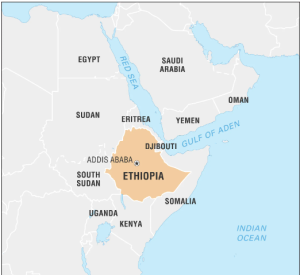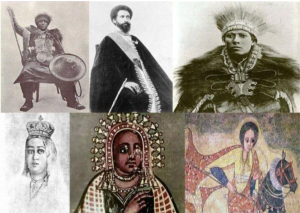
Ethiopia, is a landlocked country located in the Horn of Africa. The country in question has a rather little size, characterized by equivalent dimensions in both its north-south and east-west orientations, and is wholly situated within the tropical latitudes. Addis Ababa, the capital city of the country, is geographically situated in close proximity to the center of the continent. The name “Addis Ababa” translates to “New Flower” in English. Ethiopia is the largest and most densely populated country in the Horn of Africa. In 1993, Ethiopia’s access to the Red Sea was severed with the secession of Eritrea, a former province.
Language
Ethiopia is characterized by a diverse array of ethnic groupings, which may be primarily distinguished based on language categorization. Ethiopia is characterized by the presence of four distinct linguistic groups, which together account for the diverse array of over 100 languages spoken inside the country. Within the Afro-Asiatic language family, a significant proportion of the languages are categorized as Semitic, Cushitic, or Omotic. Within the Nilo-Saharan language family, a subset of languages has been categorized as Nilotic, constituting the fourth distinct group.
Climate

The summits of the Simien and Bale Mountains exhibit Afro-Alpine conditions, whilst the lowlands in the north-east, east, and south-east regions are characterized by desert-like conditions. The country has a diverse range of climate and geography, including tropical rainforests characterized by high levels of precipitation and humidity in the southern and southwestern regions, as well as the Afro-Alpine zone.
History

Ethiopia has the distinction of being among the first countries to emerge on the African continent, with its rich cultural heritage dating back many millennia. The Semitic Abyssinians, sometimes referred to as Habesha, mostly consist of the Amhara and Tigray ethnic groups, with the Cushitic Agaw people. These groups historically held dominion over the region known as Abyssinia, or more accurately referred to as “Ze Etiyopia.” The Harari people of Arab descent resided in the lowlands of the Eastern escarpment of the Ethiopian highlands. They were responsible for the establishment of Sultanates such as Ifat and Adal, alongside the Afar community. The ancient Sidama and Semitic Gurage, together with other ethnic groups, were situated in the central and southern regions.
The establishment of its capital at Yeha in the 10th century BC allowed the kingdom of D’mt to emerge as one of the first powers to achieve regional domination. The Aksumite Kingdom, with its capital situated at Aksum, emerged as a significant power during the first century AD in what is now known as the Tigray Region. It achieved conquests over South Arabia, Meroe, and the neighboring territories. The formal establishment of Christianity as a state religion occurred during the early fourth century during the reign of Ezana. During the reign of Ezana, the Aksumites originally adopted the self-designation of “Ethiopians.” Subsequently, Philostorgius emerged as the first foreign author to use the term “Ethiopians” in reference to the Aksumites. The increasing displacement of trade by Islam on the Arabian Peninsula resulted in the decline of the Aksumite kingdom, which was mostly Christian. The commercial hegemony of Aksum in the region eventually waned due to its increasing isolation and a subsequent downturn in its economic fortunes. The Zagwe dynasty emerged as the successors of the Aksumites, establishing a new seat of power at Lalibela. However, their reign came to an end in the thirteenth century when they were overthrown by the Solomonic dynasty. During the early Solomonic period, Ethiopia saw significant military advancements and engaged in imperial expansion, resulting in its establishment as a dominant power in the Horn of Africa.
